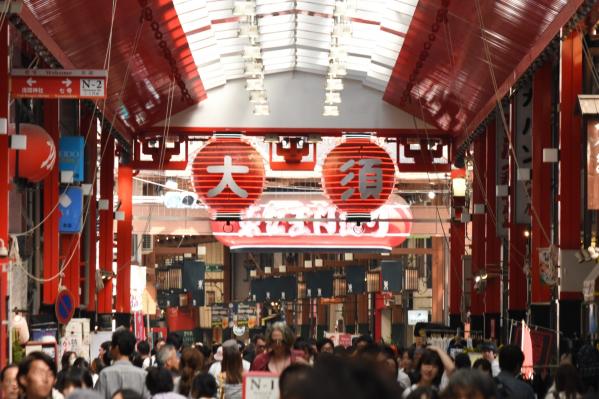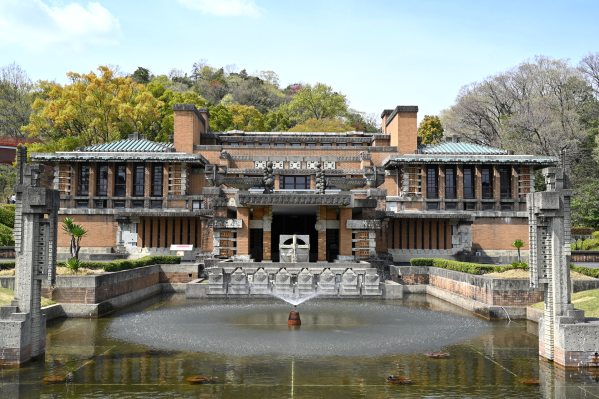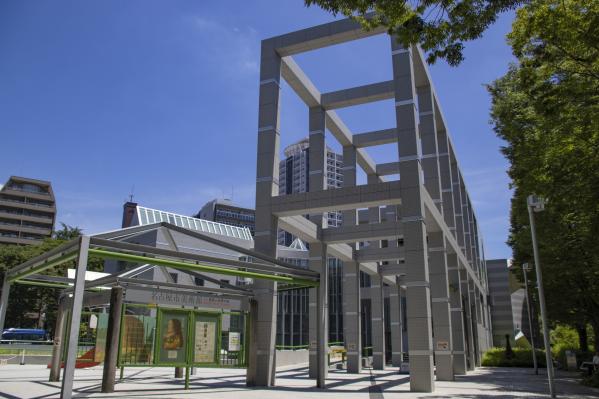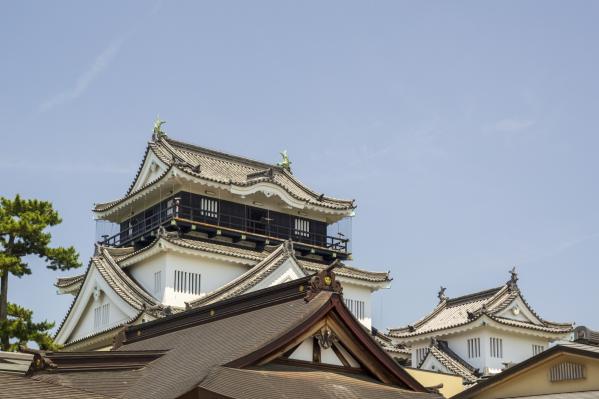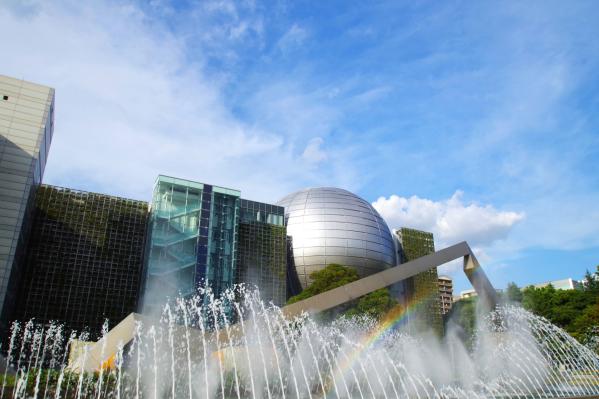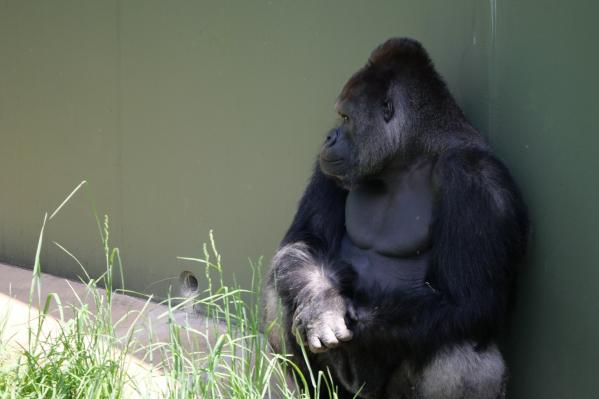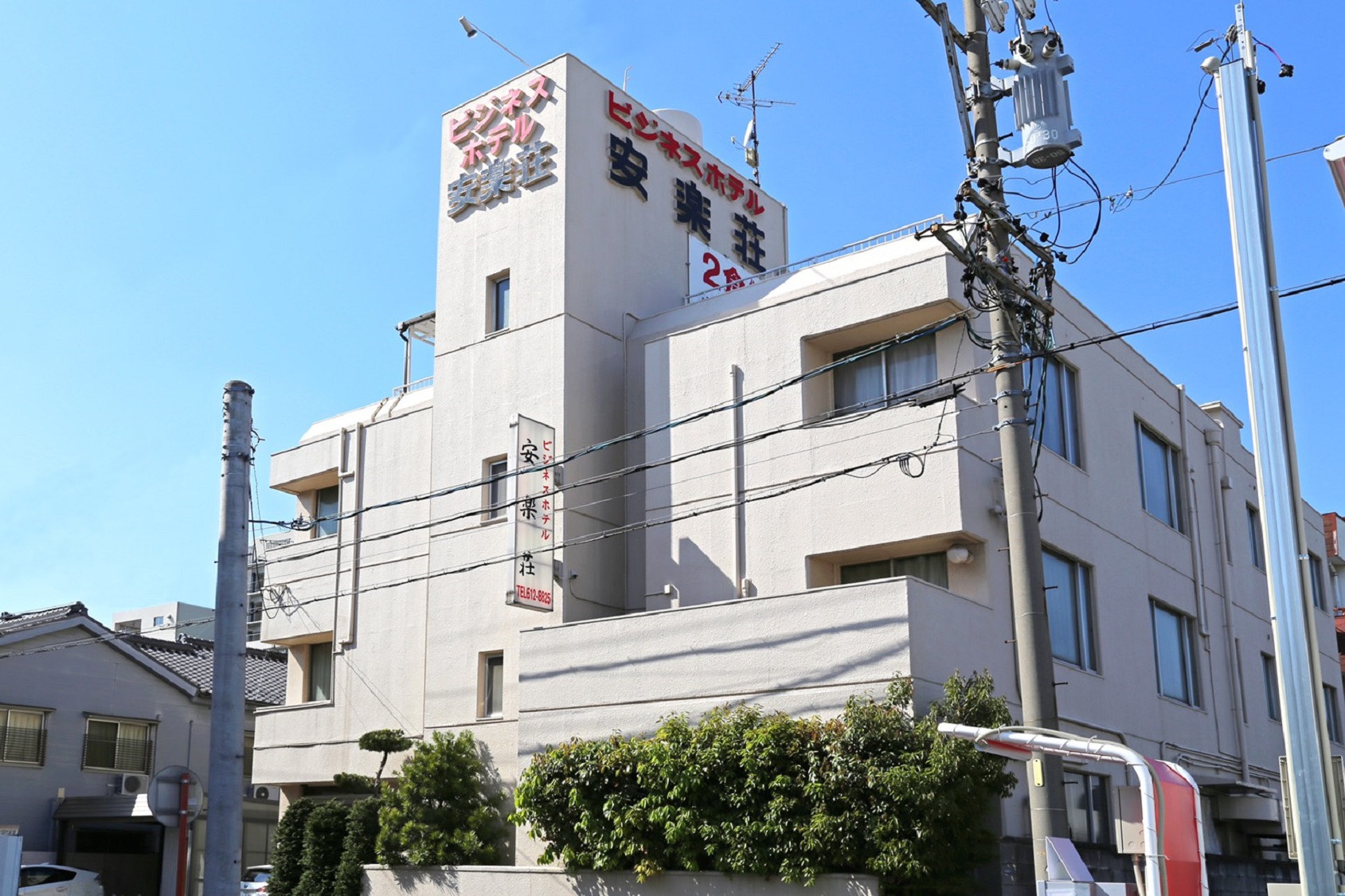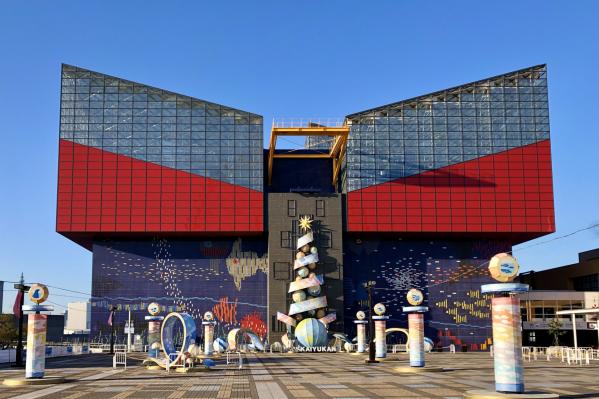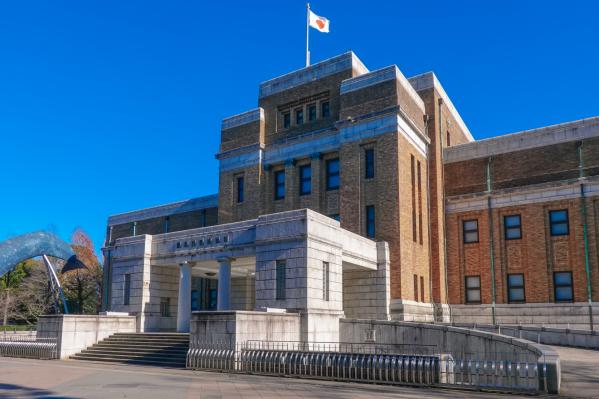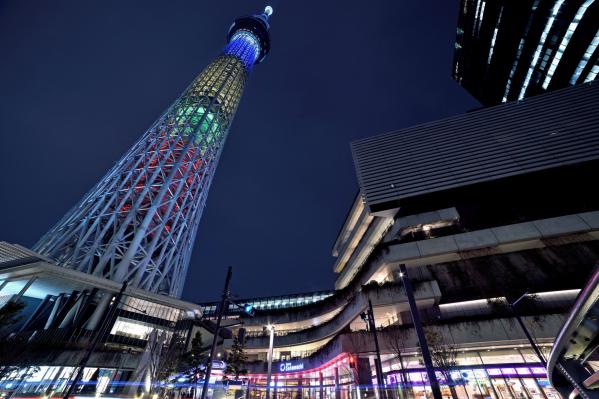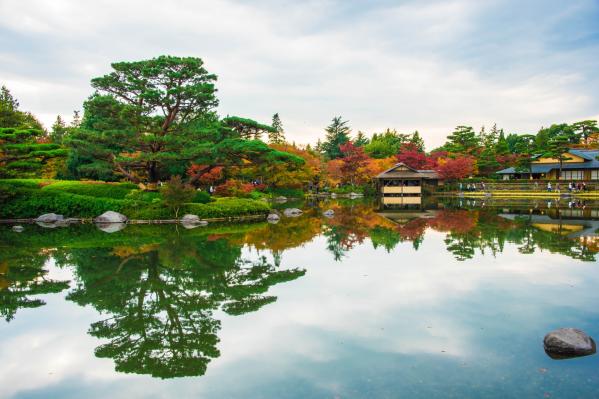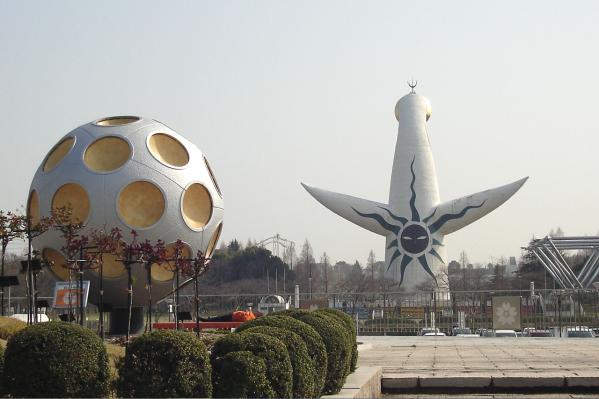
Nagoya Port Aquarium
On the other hand, the North Building is themed "A Journey of 3.5 Billion Years: Animals that Returned to the Sea." It introduces the ecology and evolution of marine mammals, such as whales. One of the highlights is the dolphin performance held in Japan's largest pool. The dimensions of this pool are impressive, measuring 60 meters in width, 30 meters in depth, and up to 12 meters deep. Viewing dolphins through the underwater observation window is an exceptional experience.
Additionally, Nagoya Port Aquarium actively engages in scientific research. It features many pioneering efforts in Japan, such as beluga breeding and the care of penguins in extremely cold tanks. The sea turtle breeding tank even has a sandy beach for nesting, resulting in successful breeding.
This aquarium holds value beyond being a mere exhibition facility; it is a place that combines education, research, and enjoyment. Nagoya Port Aquarium can be regarded as a valuable institution where both children and adults can learn from multiple perspectives about marine life and their environments.
Basic Information
- Spot Name
- Nagoya Port Aquarium
- Location
- 〒455-0033 1-3 Minatomachi, Minato Ward, Nagoya City, Aichi Prefecture
- Access
- Tokyo Metro Higashiyama Line: Transfer at "Sakae" station to Meijo Line towards Kanayama (counterclockwise) bound for "Nagoya Port". Get off at the terminus "Nagoya Port" station (Exit 3) and walk for 5 minutes.
Meitetsu Line & JR Line: Get off at "Kanayama" station, transfer to the subway, take Meiko Line bound for "Nagoya Port". Get off at the terminus "Nagoya Port" station (Exit 3) and walk for 5 minutes. - Parking
- [Ordinary cars] Approximately 1,200 vehicles / 100 yen per 30 minutes (maximum 1,000 yen for 24 hours)
[Buses] 23 vehicles / 900 yen once per day - Business Hours
- 【Regular Period】9:30 AM - 5:30 PM
【Golden Week & Summer Vacation Period】9:30 AM - 8:00 PM
【Winter Season】9:30 AM - 5:00 PM
* Admission is until 1 hour before closing time. - Regular Holiday
- Closed every Monday (the following day if it falls on a holiday) * Open without holidays during GW, from July to September, New Year’s holidays, and spring break * Temporary closures may occur (maintenance closures in winter).
- Fees
- 《Aquarium Single Ticket》
【Adults & High School Students】¥2,030
【Elementary & Middle School Students】¥1,010
【Toddlers (4 years and older)】¥500
*Please note that prices are subject to change, so please check the official website for confirmation. - Contact Information
- Phone Number:052-654-7080
- Official Website
Map
Detailed Information
▶ North Hall: A Journey of 3.5 Billion Years
- Animals Returned to the Sea -
Approximately 3.5 billion years ago, the first life forms on Earth, single-celled organisms, were born in the ocean. Countless forms of life followed their evolutionary paths, and some organisms that ventured onto land evolved into the gigantic dinosaurs that once ruled the earth but eventually went extinct. Later, mammals became the dominant land animals, and about 50 million years ago, some of these mammals returned to the ocean, the birthplace of life. They evolved into the whales we know today. To adapt to life underwater, they transformed into streamlined shapes, evolving into the beautiful forms we see now. We will introduce the world of cetaceans, known to have developed wonderful intelligence, along with fascinating adaptations for underwater living, in this exhibit following the designated route.
▶ Japanese Seas, 2nd Floor of North Hall
In “Japanese Seas,” you can view orcas, bottlenose dolphins, and common dolphins. The impressive presence of the orca, with its beautiful black and white body, truly conveys the feeling of "king of the sea." Visitors are also charmed by the playful curiosity of the dolphins as they observe guests through the glass. You'll be able to see the dolphins swimming together, gently touching each other with their flippers and playing with their toys, offering a glimpse into their daily lives.
▶ Aurora Sea, 2nd Floor of North Hall
In “Aurora Sea,” you will find belugas, which live around the Arctic. Belugas are characterized by their round, melon-shaped heads and stout, white bodies. You can watch the graceful swimming of the belugas through the tank and listen to their beautiful sounds, reminiscent of a canary.
▶ Evolutionary Sea, 2nd Floor of North Hall
“Evolutionary Sea” showcases the journey of how land-dwelling mammals evolved into today’s whales. The display includes replicas of rare fossils as well as the largest collection of whale skeletal specimens in Japan. There are also informative illustrations and videos, allowing you to grasp the passage of time over approximately 50 million years.
▶ Underwater Observation Deck, 2nd Floor of North Hall
From a large underwater observation window measuring 4m by 29m, you can immerse yourself in the stunning blue underwater world. When dolphin performances are underway, observe the powerful swimming of dolphins before they jump, or during other times, watch the dolphins swimming leisurely. The area is carpeted, inviting you to sit back and relax.
▶ Main Pool, 3rd Floor of North Hall
The “Main Pool,” measuring 60m wide, 30m deep, and with a maximum depth of 12m, hosts two popular events: dolphin performances and orca training sessions. The arena can accommodate around 3,000 people and features a large screen measuring 8.6m by 14.7m, making it the largest in Japan. You can witness the astonishing physical abilities and intelligence of the dolphins and orcas as they swim with all their might.
▶ Aurora Sea, 3rd Floor of North Hall
From the 3rd floor of “Aurora Sea,” you can observe belugas from above the water. Additionally, a hand pump is installed next to the pool, allowing you to touch water at the same temperature as the beluga pool. A replica of a polar bear den, a typical animal of the Arctic, is also created, enabling you to experience the environment in which the belugas live.
▶ South Hall: A Journey to Antarctica
- Encounter Various Lives in Five Oceans Crossed by Earth -
The vast oceans covering about 70% of the Earth have different water temperatures and climates, resulting in diverse adaptations and evolutions among creatures. In the South Hall, you will follow the course of the “Polar Research Vessel Fuji,” which was moored at Nagoya Port Garden Pier when it headed to Antarctica, and observe animals living in various habitats, such as “Japanese Seas,” “Deep-Sea Gallery,” “Equatorial Sea,” “Australian Water’s Edge,” and “Antarctic Sea.”
Take off on a journey to Antarctica and closely observe the ecology of the various creatures living in different water bodies.
▶ Japanese Seas, 2nd Floor of South Hall
“Japanese Seas” recreates the environment of the surrounding waters of Japan, where diverse creatures inhabit. Besides the “Kuroshio Large Tank,” where you can witness a "sardine tornado," there’s a “Tunnel Tank” for viewing gracefully swimming fish from below, as well as various tanks replicating environments such as tidal flats and seagrass beds, showcasing a multitude of creatures. In the “Micro Aquarium,” you can observe small creatures living in Nagoya Port through a camera.
▶ Deep-Sea Gallery, 1st & 2nd Floor of South Hall
The “Deep-Sea Gallery” displays creatures that inhabit depths greater than 200 meters, known as deep-sea habitats. Here, you can view the world’s largest arthropods, such as Japanese spider crabs, sharks, and many deep-sea organisms. These living specimens, along with displays of preserved specimens, dioramas, 3D holograms, and models introduce unique creatures that have evolved under high pressure, low temperatures, and in the darkness of the deep ocean.
▶ Equatorial Sea, 1st, 2nd & 3rd Floor of South Hall
The “Equatorial Sea” features a “Coral Reef Large Tank” modeled after the Great Barrier Reef in Australia, extending from the 1st to the 3rd floors of the South Hall. The tank is home to colorful and various-shaped fish, showcasing the diversity of creatures found in coral reefs. Additionally, there’s a challenging “Live Coral Tank” where they try to cultivate corals, and a “Coral Close-up Tank” answering questions about corals—allowing you to experience a paradise-like coral reef world filled with vibrant creatures.
▶ Sea Turtle Habitats, 2nd & 3rd Floor of South Hall
In the “Equatorial Sea” on the 2nd and 3rd floors, the “Sea Turtle Habitat” is designed in a donut shape to ensure the turtles can swim freely, housing green turtles, loggerhead turtles, and hawksbill turtles. Also, an artificial beach measuring 5m in width and 20m in length has been set up for the turtles to come ashore. On the 3rd floor, there’s a tank where you can observe the growth of baby turtles born at the Nagoya Port Aquarium.
▶ Australian Water’s Edge, 3rd Floor of South Hall
In “Australian Water’s Edge,” you can experience a subtropical waterside using local plants, including tamarind and climbing liana that can grow up to 3m. You will find turtles such as the distinctive snouted turtle, and fish like the northern barramundi from the arowana family.
▶ Antarctic Sea, 3rd Floor of South Hall
In the “Antarctic Sea,” you can learn about the Antarctic ecosystem formed by resilient creatures, like Antarctic krill and fish that survive without freezing even in sub-zero waters, in an ocean that is over 95% covered by ice. The penguin tank showcases four species of penguins living on the Antarctic continent and surrounding islands, allowing you to observe their lively swimming and waddling movements.
▶ Jellyfish Lounge, 1st Floor of South Hall
In “Jellyfish Lounge,” about 500 jellyfish of approximately 11 species are exhibited. Using mirrors and lighting effects, the beauty of the jellyfish is enhanced, creating a fantastical atmosphere. Additionally, in the adjoining “Jellyfish Lab” corner, you can observe the growth process from baby jellyfish to mature jellyfish.
Nagoya Port Aquarium Movies
Aichi Tourist Attractions
View ListNagoya Castle
Nagoya Castle is an important place in Japan's history and culture, and it is considered a symbol of Nagoya City. Construction of the castle began in 1610 (the 15th ...
Osu Shopping Street
Osu Shopping District is located on the south side of the bustling Sakae area in Nagoya city and is a vibrant “melting pot” of diverse industries, cultures, and even...
The Museum Meiji-Mura
Meiji Mura is an outdoor museum where visitors can experience Japan's history and culture centered around the Meiji era. Located in Inuyama City, Aichi Prefecture, i...
Nagoya City Art Museum
The Nagoya City Art Museum is located in the center of Nagoya City, within Shirakawa Park. The building was designed by the renowned architect Kenzō Tange, who hails...
Okazaki Castle
Okazaki Castle is a historic landmark located in Okazaki City, Aichi Prefecture, Japan, and is especially known as the birthplace of Tokugawa Ieyasu. According to le...
Nagoya City Science Museum
Nagoya City Science Museum is located in Nagoya, Aichi Prefecture, with the concept of "See, Touch, and Verify." It opened in 1962, commemorating the 70th anniversar...
Higashiyama Zoo and Botanical Gardens
Higashiyama Zoo and Botanical Gardens is one of Japan's largest comprehensive zoos and botanical gardens, sprawling over an extensive area of 60 hectares in Nagoya C...
National Treasure Inuyama Castle
Inuyama Castle is one of five castles designated as national treasures in Japan, located in Inuyama City, Aichi Prefecture. Built during the Sengoku period by Oda No...









